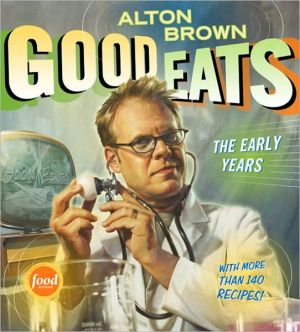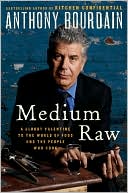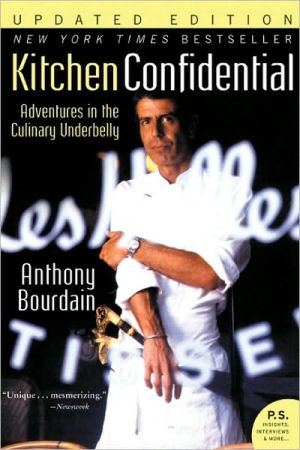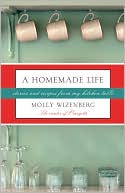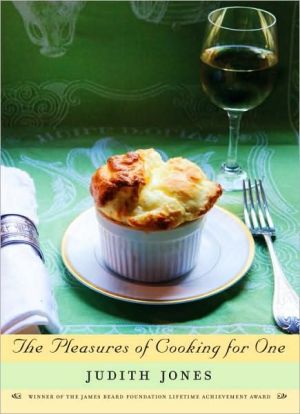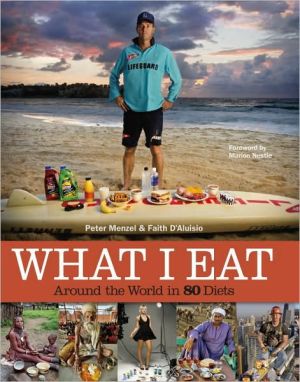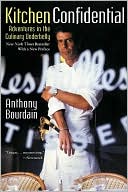Good Eats: The Early Years
Alton Brown is a foodie phenomenon: a great cook, a very funny guy, and—underneath it all—a science geek who’s as interested in the chemistry of cooking as he is in eating. (Well, almost.) Here, finally, are the books that Brown’s legion of fans have been salivating for—two volumes that together will provide an unexpurgated record of his long-running, award-winning Food Network TV series, Good Eats. \ \ From “Pork Fiction” (on baby back ribs), to “Citizen Cane” (on caramel sauce),...
Search in google:
Alton Brown is a foodie phenomenon: a great cook, a very funny guy, and—underneath it all—a science geek who’s as interested in the chemistry of cooking as he is in eating. (Well, almost.) Here, finally, are the books that Brown’s legion of fans have been salivating for—two volumes that together will provide an unexpurgated record of his long-running, award-winning Food Network TV series, Good Eats. From “Pork Fiction” (on baby back ribs), to “Citizen Cane” (on caramel sauce), to “Oat Cuisine” (on oatmeal), every hilarious episode is represented. Each book—the second will be published in fall 2010—is illustrated with behind-the-scenes photos taken on the Good Eats set. Each contains more than 140 recipes and more than 1,000 photographs and illustrations, along with explanations of techniques, lots of food-science information (of course!), and more food puns, food jokes, and food trivia than you can shake a wooden spoon at. Publishers Weekly Every so often a cookbook comes along that wishes it were a television show. Brown's latest effort actually is a television show, or rather, a marathon of all 80 episodes from the first six seasons of his Food Network hit. Egotistical yet thrifty, Brown interviews himself in the introduction, describing this work as “four hundred pages of liner notes.” And that is sadly accurate. For all its girth, there are merely 140 recipes, ranging from chocolate syrup to butternut dumplings with brown butter and sage. That these entries appear sequentially exemplifies the book's biggest problem; it is organized by TV episode number, causing readers to repeatedly visit the index to make sure they're not missing anything. The roast turkey is toward the beginning of the book, for example, but the turkey salad is hiding out somewhere in the middle. “Recipes that never made it into the show!” are promised, but good luck identifying them, and is that really a bonus? Accompanying each meal is a chart labeled, “Knowledge Concentrate.” These contain the fun, quasi-scientific facts that are the author's bread and butter (“The higher the egg-to-dairy ratio, the firmer the custard”). The remainder of the pages are cluttered with photo strips, sketches and squiggly lines, lest you get bored and turn on the tube. (Oct.)
\ From Barnes & NoblePart wizardly cook, part science geek, part stand-up comedian, Alton Brown has roasted, stirred, and baked his way into our consciousness on Great Eats, Iron Chef, Feasting on Asphalt, and other TV food shows. Good Eats: The Early Years is the first of two books that will expose every oven nook and cabinet cranny of his long-lived Food Network cooking show. In addition to the more than 140 recipes trumpeted in the subtitle, the book contains more than 1,000 (count 'em) photographs and illustrations; and at least that many food puns, jokes, trivia, and asides.\ \ \ \ \ Publishers WeeklyEvery so often a cookbook comes along that wishes it were a television show. Brown's latest effort actually is a television show, or rather, a marathon of all 80 episodes from the first six seasons of his Food Network hit. Egotistical yet thrifty, Brown interviews himself in the introduction, describing this work as “four hundred pages of liner notes.” And that is sadly accurate. For all its girth, there are merely 140 recipes, ranging from chocolate syrup to butternut dumplings with brown butter and sage. That these entries appear sequentially exemplifies the book's biggest problem; it is organized by TV episode number, causing readers to repeatedly visit the index to make sure they're not missing anything. The roast turkey is toward the beginning of the book, for example, but the turkey salad is hiding out somewhere in the middle. “Recipes that never made it into the show!” are promised, but good luck identifying them, and is that really a bonus? Accompanying each meal is a chart labeled, “Knowledge Concentrate.” These contain the fun, quasi-scientific facts that are the author's bread and butter (“The higher the egg-to-dairy ratio, the firmer the custard”). The remainder of the pages are cluttered with photo strips, sketches and squiggly lines, lest you get bored and turn on the tube. (Oct.)\ \
